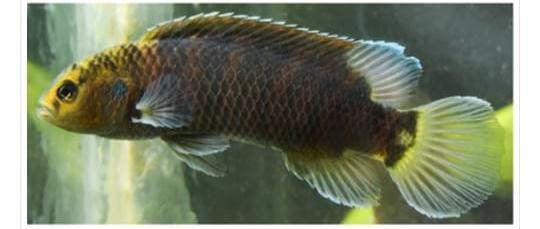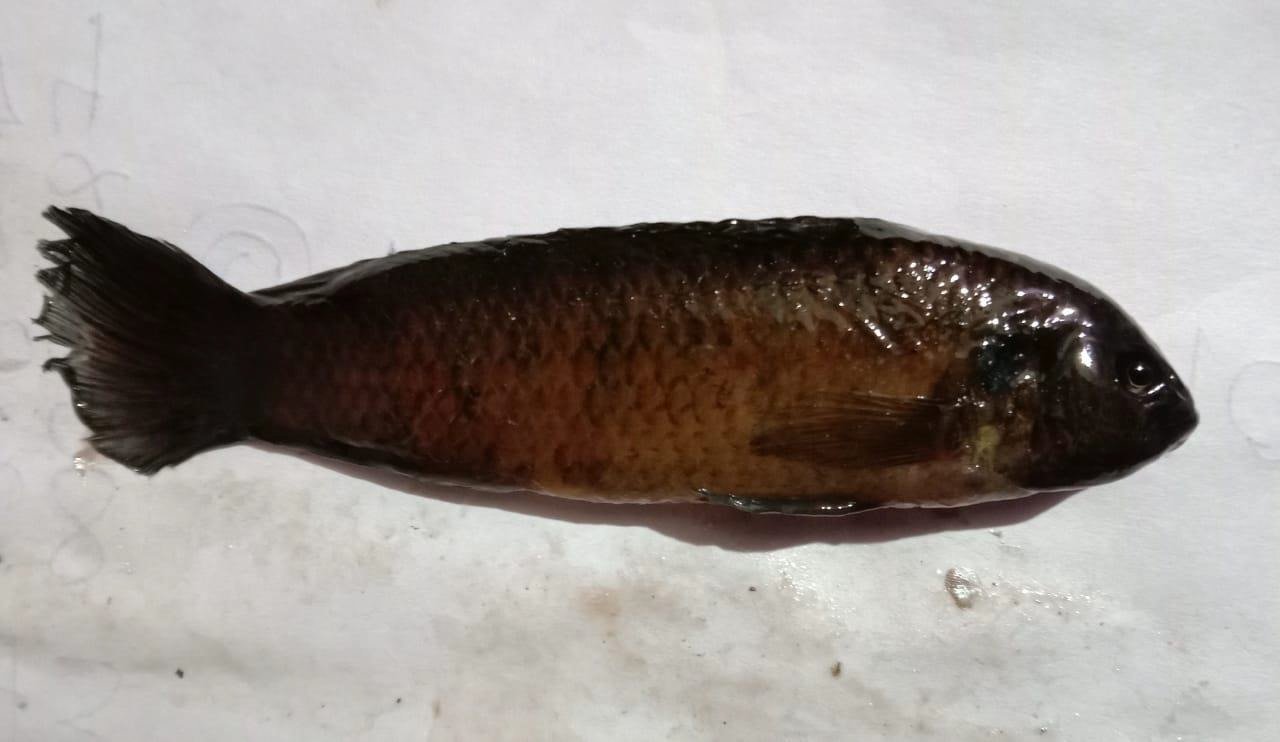Limaakum, an Assistant Professor in the Department of Zoology at Fazl Ali College, Mokokchung, has unveiled a new fish species, now christened Badis Limaakumi in his name. Limaakum, who has dedicated himself to the study of fish species in Nagaland since 2020, achieved this remarkable feat under the project titled ‘Integrated Taxonomic Studies on The Fishes Found in The Rivers of Nagaland,’ sponsored by the Department of Higher Education.
Badis limaakumi, a new species of badis fish from Nagaland, Northeast India (Teleostei: Percomorpha: Badidae). Several local names are used for this newly discovered fish species, including ‘Tepdang,’ ‘Akngashi (Ao Chungli),’ ‘Aokngatsü (Ao Mongsen),’ and ‘Sempi,’ among others.
Download Nagaland Tribune app on Google Play

Speaking to Nagaland Tribune about the significant discovery, Limaakum shared, “Badis are a group of fishes commonly found in many Asian countries. There are currently 26 different confirmed species of badis. This new badis species adds one more member to this group. Till now, this fish is unique in that it has only been reported from the Milak River and might be endemic to this river or endemic to some rivers in Nagaland only. The members of this family of fishes are known as chameleon fishes.”
This is not a first feat for the Naga Zoologist who discovered another new fish species, now known as Pethia dikhuensis in Dikhu River, Mokokchung in October 2022.
Read more: Pethia Dikhensis new fish species discovered in Dikhu river, Mokokchung
Limaakum’s foray into this particular field of research was sparked under the influence of his friend, Dr. Praveen, who introduced him to the realm of ichthyology. “I had been focusing on birds and arthropods before, but it was my friend Dr. Praveen who steered me toward this domain, ultimately altering the course of my career,” acknowledged the Zoologist.

The process of discovering and identifying this new species was not without its challenges, as Limaakum noted, “Initially, we thought that it was just some other Badis species like Badis Assamensis or Badis Badis, but when I reared some live fishes in an aquarium, they changed their color, and the coloration turned out to be quite different from its other related species. The shape of the head appeared to be quite different, and so we started looking into other complicated specific details of the fish which resulted in this new fish.”
According to Limaakum, the habitat where this new fish species was discovered is characterized by shallow riffles and occasional deeper pools, primarily composed of gravel, rocks, and mud, making it an ideal substrate for aquatic organisms.
This environment, Limaakum explains, experiences varying water flow, with slower conditions during the dry season and faster flow in the monsoon, while also being rich in plankton, providing ample food for a diverse aquatic community. “Furthermore, the habitat features an abundant invertebrate community and is surrounded by trees and shrubs along the riverbank, offering shade and stabilizing the soil. It is indeed a unique and fragile ecosystem that supports a rich diversity of life, including not only the newly discovered fish but also various other species like amphibians, reptiles, and mammals, often observed in its vicinity,” revealed Limaakum.
Throughout his research and discovery process, Limaakum also faced the challenges of the reviewing process and the restructuring of his work, which proved to be time-consuming and frustrating.
The discovery of Badis Limaakumi holds significant implications for both conservation and scientific understanding. “It adds to our knowledge of biodiversity, highlighting the uniqueness of different ecosystems. It emphasizes the need to protect these ecosystems to preserve their biodiversity. Moreover, the presence of a new species may indicate the health and stability of an ecosystem,” implied the Zoologist.

Limaakum’s work is also expected to contribute to the global knowledge of biodiversity, furthering international conservation efforts and the development of policies and regulations related to the protection of new species and their habitats.
He believes that this discovery is important for preserving natural habitats and biodiversity and is expected to fuel interest in the field of ichthyology. Encouraging aspiring researchers, Limaakum says, “Discovering new species can be challenging and time-consuming. We should be prepared for setbacks and persist in our work. One important thing is that we should have the essential expertise for classifying and identifying plants and animals when we encounter unknown species or when we come across a species that looks interesting, and staying updated with the latest technological research methods and tools will enhance the work.”
For those interested in learning more about this discovery and Limaakum’s work, the research papers are accessible, and he welcomes inquiries from individuals eager to get insights into the study of this newfound fish species.
Limaakum envisions a promising future for Nagaland, aspiring for its recognition as a ‘Fish Biodiversity Hotspot’ in the next decade.

